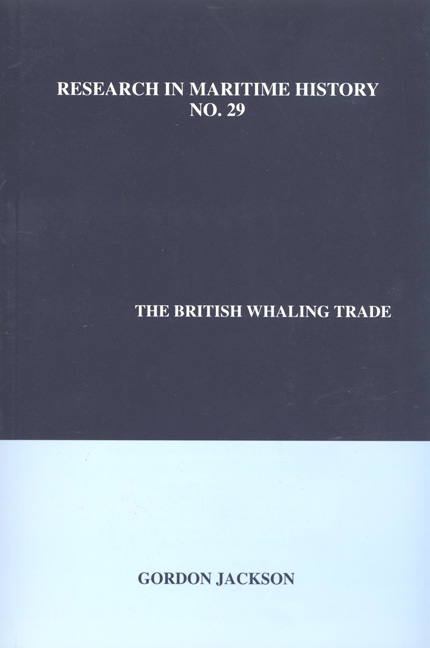Book contents
- Frontmatter
- Dedication
- Contents
- List of Tables in the Text
- List of Appendices
- New Introduction
- Preface
- Part One The Traditional Whaling Trades, 1604-1914
- Part Two The Modern Whaling Trade, 1904-1963
- Chapter 9 New Whaling Techniques
- Chapter 10 New Whaling Areas
- Chapter 11 Advances in Oil Technology
- Chapter 12 Expanding Fleets and the New Fishing Grounds, 1919-1920
- Chapter 13 Crisis and Contraction, 1929-1932
- Chapter 14 Regulated Recklessness, 1932-1939
- Chapter 15 The Final Fling, 1945-1963
- Conclusion
- Appendices
- Select Bibliography
- Additional Bibliography
- Index
Chapter 11 - Advances in Oil Technology
from Part Two - The Modern Whaling Trade, 1904-1963
- Frontmatter
- Dedication
- Contents
- List of Tables in the Text
- List of Appendices
- New Introduction
- Preface
- Part One The Traditional Whaling Trades, 1604-1914
- Part Two The Modern Whaling Trade, 1904-1963
- Chapter 9 New Whaling Techniques
- Chapter 10 New Whaling Areas
- Chapter 11 Advances in Oil Technology
- Chapter 12 Expanding Fleets and the New Fishing Grounds, 1919-1920
- Chapter 13 Crisis and Contraction, 1929-1932
- Chapter 14 Regulated Recklessness, 1932-1939
- Chapter 15 The Final Fling, 1945-1963
- Conclusion
- Appendices
- Select Bibliography
- Additional Bibliography
- Index
Summary
The rapid expansion of whaling in the decade before the First World War occurred because, after a century in which whale oil had been gradually ousted from its traditional uses, modern science gave it a new lease of life. Whale oil creased to be an elementary product, fit only for burning and other lowly uses, and became, under the influence of chemical technology, a multi-purpose raw material for modern industry. As a consequence whaling was faced with quite unprecedented demands for oil (output, for instance, rose from 47,387 tons in 1909/1910 to 134,000 in 1913/1914) and, like its product, was transformed out of all recognition. In fact modern whaling owed its origin less to Svend Foyn, who invented the techniques, than to the 1906 crisis in the world supply of fat, which provided the incentive for their wide-spread adoption.
The crisis of 1906 occurred chiefly because the production of animal fats failed to keep pace with the growth of the modern soap industry. Moreover, margarine, which was derived from the same basic ingredient, had been rapidly gaining in popularity since its introduction in the 1870s, and had become a staple item in working class diets in Britain, Germany and Scandinavia. Since it was the more valuable product, its manufacturers were able to overbid the soapmakers for the best quality raw materials, and oil chemists, especially in Germany, set to work to find acceptable substitutes for animal fat. For the first time for centuries the soapmakers thought in terms of using whale oil as a raw material, although in its natural form it was suitable only for certain industrial soft soaps.
The new methods of whaling outlined above had already brought about a spectacular improvement in the quality of the oil itself. That whale oil had unpleasant characteristics was common knowledge, and Greenland yards and whaling ships had been notoriously offensive. What was not commonly realised was that pure, fresh whale oil (produced from mammal fat, not from fishes!) was no more offensive than port or beef dripping. Scoresby had pointed this out in 1820, when he attributed the objectionable qualities of whale oil to the fact that “when putrefaction commences, a small portion of the blood contained in the blubber is probably combined in the oil, and the animal fibre, in considerable quantity, is dissolved in it.“
- Type
- Chapter
- Information
- The British Whaling Trade , pp. 161 - 168Publisher: Liverpool University PressPrint publication year: 2004



